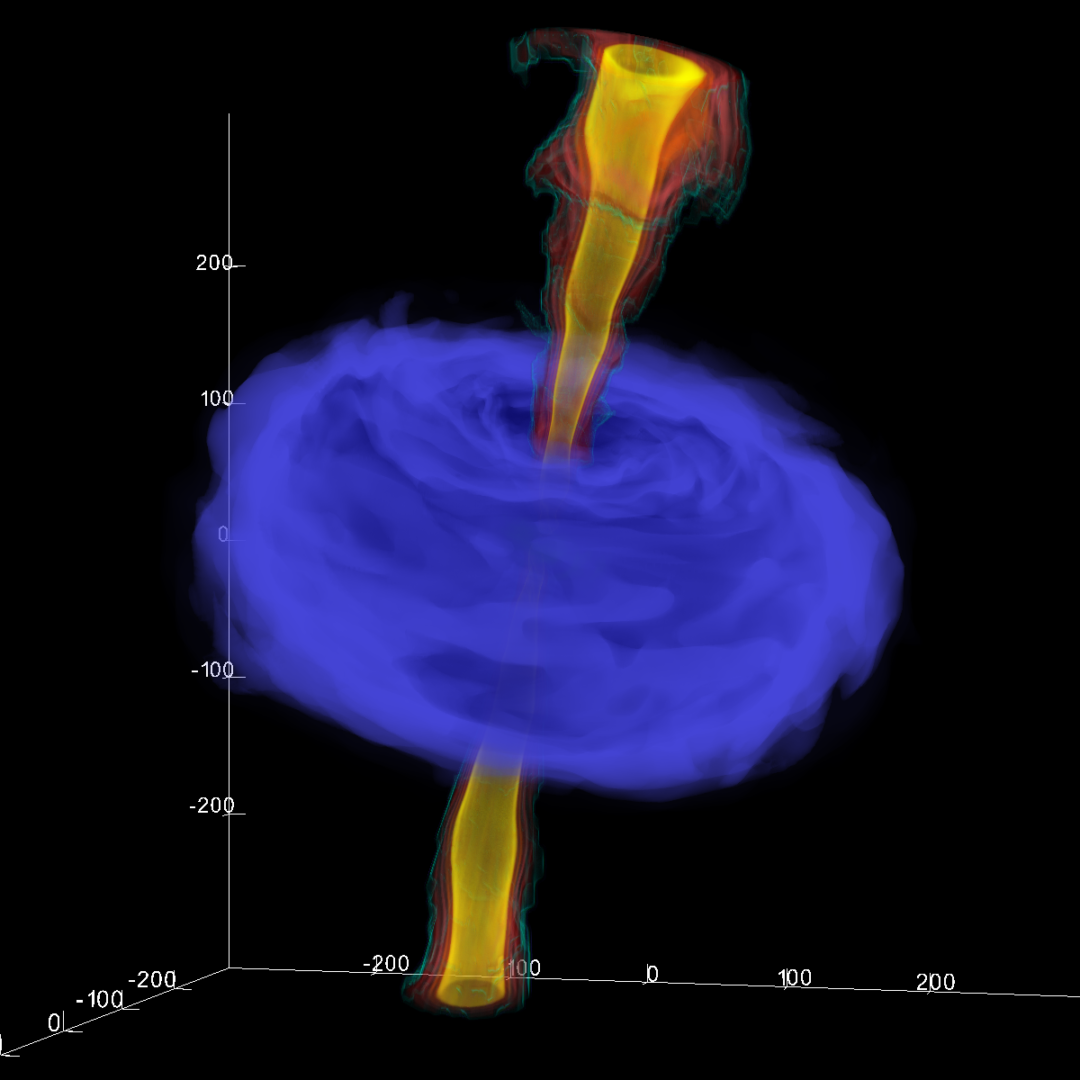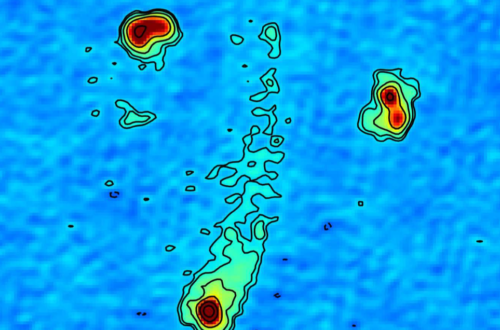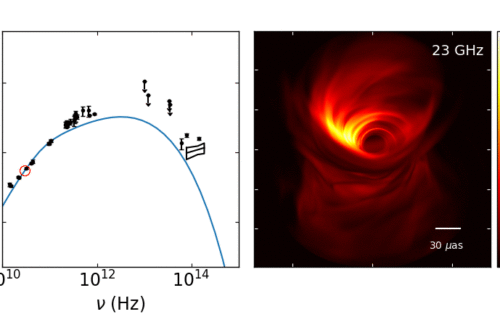Throughout this past year, I have been working in Sera’s group, alongside Matthew Liska (PhD of Michiel van der Klis), on analyzing the largest black-hole (BH) accretion simulations ever performed. In collaboration with Alexander Tchekhovskoy (Northwestern University) and Adam Ingram, we studied tilted accretion of magnetized matter onto a rapidly spinning BH, and the resulting relativistic jets. For the first time, we have demonstrated in simulations that relativistic jets precess along with the tilted accretion disk around the BH spin. This month, our first article on the results was accepted for publication in MNRAS Letters. We have worked on a press release, which was published yesterday by NOVA (network group for astronomy in the Netherlands; English version here). In addition, I have given a short interview which was broadcast on a Dutch radio channel today (BNR Nieuwsradio, also as a podcast here).
The press release contains more info, but I’ll give a quick walkthrough of the motivation behind our findings here. In the simulations, the initial rotation axis of the accretion disk was tilted with respect to the BH spin. Tilted accretion is supposed to be common in nature, because infalling matter does not “know” about the BH spin. The tilted disk can be dragged along by the twisting of spacetime due to a rotating BH, resulting in disk precession around the BH spin. It has never been tested before whether that also translates into precession of the jet direction. When jets change their launching angle periodically, an observer far away would receive a periodic signal. This is somewhat comparable to observing the sweeping light of a lighthouse. It is has therefore been proposed that precessing jets can explain quasi-periodic oscillations (QPOs) in infrared/optical wavelengths, recently observed in a BH system (BH X-ray binary; Kalamkar et al. 2015). Our results are an important confirmation for this particular explanation of QPOs in relativistic jets.
Our progress was made possible by Matthew Liska’s newly developed GPU-based code for General-Relativistic Magnetohydrodynamics in 3D: H-AMR, based on previous work of Gammie, McKinney, Noble, and Tchekhovskoy (HARM2D). H-AMR allowed for obtaining a large allocation on the supercomputer Bluewaters (University of Illinois). Below is one of the 3D visualizations I have made based on the simulations (also included in the press release). A movie of one of these simulations requires over 100 Terabytes of data, the processing of which also required the supercluster. In the movie, we see clearly how jets change direction over time, as the tilted accretion disk is warped due to the twisting of spacetime around the black hole spin.




